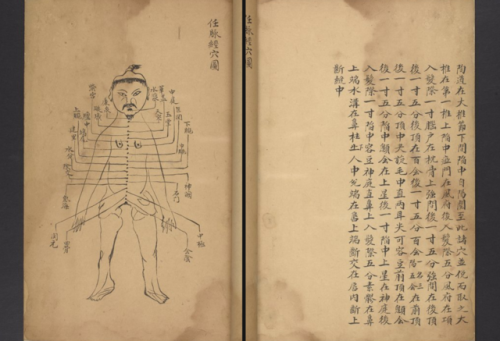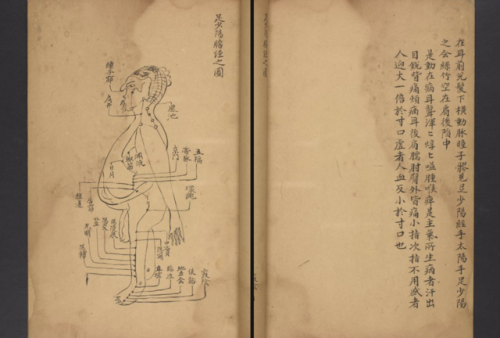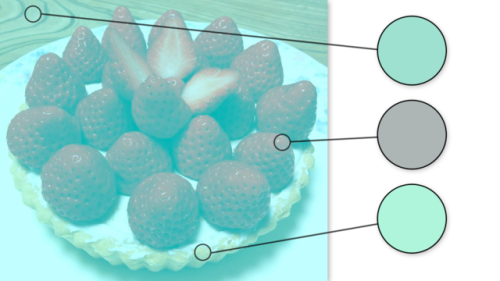“The Mouse Chirpeth… The Duck Quaketh… The Wolf Howleth” — From The Very First Picture Book

“The Mouse chirpeth… The Duck quaketh… The Wolf howleth” — from the very first picture book for children, published in 1658: http://buff.ly/2l6FaBH
More Posts from Philosophical-amoeba and Others
Computer Science/Engineering Masterpost
Online lectures:
Discrete Mathematics (x) (x) (x) (x) (x)
Data Structures (x) (x) (x) (x) (and Object Oriented Programming (x) )
Software Engineering (x)
Database (x)
Operating Systems (x) (x) (x) (x) (x) (x) (x)
Structure and Interpretation of Computer Programs (x)
Computer Architecture (x)
Programming (x) (x) (x) (x) (x) (x) (x)
Linear Algebra (x) (x) (x)
Artificial Intelligence (x) (x)
Algorithms (x)
Calculus (x) (x) (x)
Tutorials (programming) and other online resources:
Programming languages online tutorials and Computer Science/Engineering online courses
Java tutorial
Java, C, C++ tutorials
Memory Management in C
Pointers in C/C++
Algorithms
Genetic Algorithms
Websites for learning and tools:
Stack Overflow
Khan Academy
Mathway
Recommended books:
Computer organization and design: the hardware/software interface. David A.Patterson & John L. Hennessy.
Artificial intelligence: a modern approac. Stuart J. Russel & Peter Norvig.
Database systems: the complete book. Hector Garcia-Molina, Jeffrey D. Ullman, Jennifer Widom.
Algorithms: a functional programming approach. Fethi Rabbi & Guy Lapalme.
Data Structures & Algorithms in Java: Michael T. Goodrich & Roberto Tamassia.
The C programming language: Kernighan, D. & Ritchie.
Operating System Concepts: Avi Silberschatz, Peter Baer Galvin, Greg Gagne.
Study Tips:
How to Study
Exam Tips for Computer Science
Top 10 Tips For Computer Science Students
Study Skills: Ace Your Computing Science Courses
How to study for Computer Science exams
How to be a successful Computer Science student
Writing in Sciences, Mathematics and Engineering:
Writing a Technical Report
Writing in the Sciences (Stanford online course)
Writing in Mathematics, Statistics and Computer Science Courses





This week, we’re taking a look at manuscripts having to do with health, medicine, and human physiology specifically focusing on how bodies are displayed in manuscript illuminations or diagrams across different cultures.
LJS 389 shown above, is a 14th century Chinese treatise on the anatomy, physiology, and pathology of blood vessels titled Shi si jing fa hui. The manuscript is made from bamboo paper and the diagrams and kaishu script are written with black ink. Focus on the diagrams of the bodies and stay tuned this week to see not only how the details and forms of these depictions change from culture to culture, but also the mediums with which these manuscripts are created.
The full LJS 389 manuscript filled with more diagrams can be found on Openn: http://openn.library.upenn.edu/Data/0001/html/ljs389.html
and Penn In Hand: http://hdl.library.upenn.edu/1017/d/medren/4824235
Complex learning dismantles barriers in the brain
Biology lessons teach us that the brain is divided into separate areas, each of which processes a specific sense. But findings published in eLife show we can supercharge it to be more flexible.

Scientists at the Jagiellonian University in Poland taught Braille to sighted individuals and found that learning such a complex tactile task activates the visual cortex, when you’d only expect it to activate the tactile one.
“The textbooks tell us that the visual cortex processes visual tasks while the tactile cortex, called the somatosensory cortex, processes tasks related to touch,” says lead author Marcin Szwed from Jagiellonian University.
“Our findings tear up that view, showing we can establish new connections if we undertake a complex enough task and are given long enough to learn it.”
The findings could have implications for our power to bend different sections of the brain to our will by learning other demanding skills, such as playing a musical instrument or learning to drive. The flexibility occurs because the brain overcomes the normal division of labour and establishes new connections to boost its power.
It was already known that the brain can reorganize after a massive injury or as a result of massive sensory deprivation such as blindness. The visual cortex of the blind, deprived of its input, adapts for other tasks such as speech, memory, and reading Braille by touch. There has been speculation that this might also be possible in the normal, adult brain, but there has been no conclusive evidence.
“For the first time we’re able to show that large-scale reorganization is a viable mechanism that the sighted, adult brain is able to recruit when it is sufficiently challenged,” says Szwed.
Over nine months, 29 volunteers were taught to read Braille while blindfolded. They achieved reading speeds of between 0 and 17 words per minute. Before and after the course, they took part in a functional Magnetic Resonance Imaging (fMRI) experiment to test the impact of their learning on regions of the brain. This revealed that following the course, areas of the visual cortex, particularly the Visual Word Form Area, were activated and that connections with the tactile cortex were established.
In an additional experiment using transcranial magnetic stimulation, scientists applied magnetic field from a coil to selectively suppress the Visual Word Form Area in the brains of nine volunteers. This impaired their ability to read Braille, confirming the role of this site for the task. The results also discount the hypothesis that the visual cortex could have just been activated because volunteers used their imaginations to picture Braille dots.
“We are all capable of retuning our brains if we’re prepared to put the work in,” says Szwed.
He asserts that the findings call for a reassessment of our view of the functional organization of the human brain, which is more flexible than the brains of other primates.
“The extra flexibility that we have uncovered might be one those features that made us human, and allowed us to create a sophisticated culture, with pianos and Braille alphabet,” he says.
Types of mooncakes
Right now(is festival for chinese singaporeans) is the mid-autumn festival. According to the ancient Chinese legend, the story of Chang Er, the wife of a merciless king who downed the elixir of immortality he had intended to drink, to save her people from his tyrannical rule.The tale goes that she ascended to the moon after that, and has been worshipped by the Chinese as a Moon Goddess ever since.

Making and sharing mooncakes is one of the hallmark traditions of this festival. In singapore, we have main five different chinese dialect group(hokkien,teochew,hakka,cantonese,hainanese) so of course, there are five different types of mooncakes.
CANTONESE MOOKCAKE
This is the most common style of mooncakes sold by bakeries and hotels. The round pastry, which is about 10cm in diameter and about 4cm thick, comes from south China’s Guangdong province and is also eaten in Hong Kong and Macau. The traditional mooncake is filled with lotus seed or red bean paste with egg yolks inside.

However, there are the modern snowskin mooncakes which contains anything from durian to champagne. (below are champagne mooncakes)

HOKKIEN MOONCAKE
They were known as Scholar Cakes in the past and given to those taking the Imperial Examination to fill junior and senior administrative positions in the Imperial Court. The filling usually comprises winter melon, tangerine peel and melon seeds. Sesame seeds are sprinkled on the white pastry to make it fragrant.

HAINANESE MOONCAKE
Hainanese ones are filled with dried fruit such as tangerine peel as well as sesame seeds and melon seeds. It has two verision with a salty and pepper version. The.The slightly flaky skin is made with pork lard and salt. According to a blog, they are actually only found in singapore as the story goes that the hainanese community in singapore was very poor and could not afford the normal mooncakes sold so they made their own type of mooncake.

TEOCHEW MOONCAKE
Yam-filled mooncakes with a flaky crust are the most common Teochew mooncakes sold in Singapore. Another type is la gao, which is a steamed black sesame cake. It comes plain or with green bean paste or yam filling. There is also another type of Teochew mooncake, a white disc that looks like a big biscuit and is filled with tangerine peel and sugar, flavoured with five-spice powder and topped with sesame seeds.



HAKKA MOONCAKE
This is actually uncommon and almost unheard of in singapore but moon cakes in Hakka regions of china, apart from common moon cakes, have “five-kernel moon cakes” and a kind of round cake made with glutinous rice flour and sugar, compressed into different size. (I can’t find an exact picture of the hakka mooncake so)

Image: The libertine Falstaff sits with a woman on his lap and a tankard in his hand in an illustrated scene from one of William Shakespeare’s Henry IV plays. (Kean Collection/Getty Images)
The eggplant and peach emoji are standard code for racy thoughts these days, but people have been using food as sexual innuendo for centuries. In fact, William Shakespeare was a pro at the gastronomic double entendre [insert blushing face emoji here]. The Salt blog asked a Shakespeare expert to help them decode some of the bard’s bawdy food jokes. (And the result is delightful. – Nicole)
50 Shades Of Shakespeare: How The Bard Used Food As Racy Code










Staff Pick of the Week
As a lover of mythology and folklore, my first staff pick is The Wonder-Smith and His Son, by Ella Young (1867-1956), with illustrations by Boris Artzybasheff (1899-1965). It was published by Longmans, Green Co. in 1927 and was a Newbery Honor recipient in 1928. The book is a collection of myths from Ireland and Scotland about a legendary wonder smith known as the Gubbaun Saor, a “maker of worlds and a shaper of universes.” There are fourteen stories in the collection, detailing how the Gubbaun Saor got his world-building abilities, which involved finding a bag of magical tools that were dropped from the sky by a bird. The book also includes tales about his adopted son Lugh and his daughter Aunya. In her memoir, Flowering Dusk: Things Remembered Accurately and Inaccurately, Young wrote “I have a fondness for The Wonder-Smith; perhaps because I did not invent the stories in the book. I gathered them through twenty-five years of searching, and put a thread of prose round them.” The folktales were collected from story-tellers in Clare, Achill Island, Aranmore, and the Curraun.
Ella Young’s interest in Celtic mythology led to her becoming involved with the growing Irish nationalist movement. Many nationalist writers and artists were looking to Ireland’s history and legends for inspiration, and she befriended fellow Irish writers Æ (George William Russell), Padraic Colum, and William Butler Yeats. Æ called her “a druidess reincarnated.” Aside from publishing poetry and folklore, Yong was also involved in running guns and ammunition to the Irish Republican Army, and was a member of Cumann na mBAn, a women’s paramilitary organization that took part in the 1916 Easter Rising. She continued to write throughout the war, and in 1925 embarked for America to do a speaking tour about Celtic mythology at universities across the country. She was eventually granted American citizenship and accepted a teaching position at the University of California, Berkeley. Often described as mystical and otherworldly, Young lived out the rest of her life near the California coast writing and publishing stories and sharing her love of folklore with those around her.
Ukrainian illustrator Boris Artzybasheff fled the Russian Revolution for the United States in 1919. Beginning his career as an engraver, Artzybasheff soon became a book illustrator, some of which he wrote himself, such as Seven Simeons: A Russian Tale, which received a Caldecott Honor award in 1938. He is best known for his magazine covers, and he created over 200 covers for Time magazine alone. Over the course of his career his work evolved to become wonderfully surrealist, he loved anthropomorphizing machines so they would have human attributes and emotions. Even his commercial work in advertising has elements of the absurd. I believe Artzybasheff’s playfulness is evident in the woodcuts he did for The Wonder-Smith, and his illustrations are what drew me to the book.
– Sarah, Special Collections Undergraduate Assistant

How many did you know? All worth reading more about!!
11 New Facts Science Has Revealed About The Body
1. Hundreds of genes spring to life after you die - and they keep functioning for up to four days.
2. Livers grow by almost half during waking hours.
3. The root cause of eczema has finally been identified.
4. We were wrong - the testes are connected to the immune system after all.
5. The causes of hair loss and greying are linked, and for the first time, scientists have identified the cells responsible.
6. A brand new human organ has been classified - the mesentery - an organ that’s been hiding in plain sight in our digestive system this whole time.
7. An unexpected new lung function has been found - they also play a key role in blood production, with the ability to produce more than 10 million platelets (tiny blood cells) per hour.
8. Your appendix might actually be serving an important biological function- and one that our species isn’t ready to give up just yet.
9. The brain literally starts eating itself when it doesn’t get enough sleep. brain to clear a huge amount of neurons and synaptic connections away.
10. Neuroscientists have discovered a whole new role for the brain’s cerebellum - it could actually play a key role in shaping human behaviour.
11. Our gut bacteria are messing with us in ways we could never have imagined. Neurodegenerative diseases like Parkinson’s might actually start out in the gut, rather than the brain, and there’s mounting evidence that the human microbiome could be to blame for chronic fatigue syndrome.

Hey resident neuroscientist @sixpenceee, wanna explain why the strawberries look red?
-
 merry-melody liked this · 4 years ago
merry-melody liked this · 4 years ago -
 klaproos liked this · 6 years ago
klaproos liked this · 6 years ago -
 wakingfromthewater reblogged this · 6 years ago
wakingfromthewater reblogged this · 6 years ago -
 milkshakemotel liked this · 6 years ago
milkshakemotel liked this · 6 years ago -
 redcloud liked this · 6 years ago
redcloud liked this · 6 years ago -
 jbbartram-illu liked this · 6 years ago
jbbartram-illu liked this · 6 years ago -
 imathers reblogged this · 6 years ago
imathers reblogged this · 6 years ago -
 solskinnogslikkepinner-blog reblogged this · 7 years ago
solskinnogslikkepinner-blog reblogged this · 7 years ago -
 friend-enkidu reblogged this · 7 years ago
friend-enkidu reblogged this · 7 years ago -
 deadtrilobitesociety reblogged this · 7 years ago
deadtrilobitesociety reblogged this · 7 years ago -
 b-monte liked this · 7 years ago
b-monte liked this · 7 years ago -
 fluffiestsmutgoddess reblogged this · 8 years ago
fluffiestsmutgoddess reblogged this · 8 years ago -
 io-bruxism liked this · 8 years ago
io-bruxism liked this · 8 years ago -
 ghost-album liked this · 8 years ago
ghost-album liked this · 8 years ago -
 unnamedaccomplice liked this · 8 years ago
unnamedaccomplice liked this · 8 years ago -
 bigcatmum reblogged this · 8 years ago
bigcatmum reblogged this · 8 years ago -
 patefoni liked this · 8 years ago
patefoni liked this · 8 years ago -
 tsuyopi liked this · 8 years ago
tsuyopi liked this · 8 years ago -
 iignatz reblogged this · 8 years ago
iignatz reblogged this · 8 years ago -
 iignatz liked this · 8 years ago
iignatz liked this · 8 years ago -
 i-once-dreamed-i-was-a-potato liked this · 8 years ago
i-once-dreamed-i-was-a-potato liked this · 8 years ago -
 nathanielbellows liked this · 8 years ago
nathanielbellows liked this · 8 years ago -
 it-goes-so-fast liked this · 8 years ago
it-goes-so-fast liked this · 8 years ago -
 velveteeen-dreams liked this · 8 years ago
velveteeen-dreams liked this · 8 years ago -
 thedogopera reblogged this · 8 years ago
thedogopera reblogged this · 8 years ago -
 thedogopera liked this · 8 years ago
thedogopera liked this · 8 years ago -
 lfd1 liked this · 8 years ago
lfd1 liked this · 8 years ago -
 brandef reblogged this · 8 years ago
brandef reblogged this · 8 years ago -
 denzquix reblogged this · 8 years ago
denzquix reblogged this · 8 years ago -
 nude liked this · 8 years ago
nude liked this · 8 years ago -
 busilisk liked this · 8 years ago
busilisk liked this · 8 years ago -
 newfriendly reblogged this · 8 years ago
newfriendly reblogged this · 8 years ago -
 pastageneral-blog liked this · 8 years ago
pastageneral-blog liked this · 8 years ago -
 wombat-shaped liked this · 8 years ago
wombat-shaped liked this · 8 years ago -
 quoiquecesoit liked this · 8 years ago
quoiquecesoit liked this · 8 years ago -
 highspeedmatzoball reblogged this · 8 years ago
highspeedmatzoball reblogged this · 8 years ago -
 mutatrix-archive reblogged this · 8 years ago
mutatrix-archive reblogged this · 8 years ago -
 vakatoga reblogged this · 8 years ago
vakatoga reblogged this · 8 years ago
A reblog of nerdy and quirky stuff that pique my interest.
291 posts
